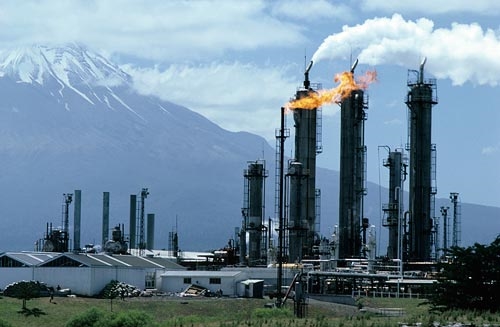One of the primary determining factors of the efficiency of any solar system on your roof is the direction it faces. Without the correct orientation - or at least correct enough - your solar panels simply won’t receive enough direct sunlight.
Below, we take a look at some of the most common questions about solar panel direction and what you can do if yours aren’t in the right position.
Does orientation of solar panels matter?
In the southern hemisphere, the best direction for typical roof-mounted solar panels to face is north. The sun rises in the east and sets in the west, so a north-facing solar panel will receive the maximum amount of sunlight it can, no matter what time of day it is.
If your panels were facing mostly east or mostly west, they will get a reduced amount of the total sunlight available during the day.
What if I don’t have a north-oriented roof?
In our experience, there are few ‘perfect’ sites for solar power. Not everyone has a roof section that’s both a) the right size and b) facing perfectly towards true north. If this includes your home or business, don’t worry - there’s still an excellent chance that solar power can work for you.
For example, you may have some of your panels facing north-west or north-east, or you may need to invest in slightly more panels (or higher efficiency panels) to get the same results.
What about during the winter?
During the winter, the sun tracks lower across the sky. It still travels east to west, and a north-facing solar panel system will still get the most sunlight compared to other alternatives. Solar panels don’t stop working in winter, there are simply fewer daylight hours available.
That said, you are likely to see a drop in electricity production during the winter months, regardless of what orientation your panels face. There are fewer hours of sunlight overall, and the sun is lower in the sky, which has a greater or lesser impact on your panels depending on their tilt. In winter, the flatter your panels are, the less they will generate, while the steeper they are, the more they will generate.
Depending on where you live, winter can also mean snow, which can settle on your panels and block their production. Again, north-facing panels do best here, as the snow will melt and slide off the panels by being exposed to warming sunlight. Your panels will receive the most of this possible by facing north.
Are solar panels better flat or tilted?
There’s no question that tilted solar panels perform better than when they are laid flat.
This is due to the way that photovoltaics work. Solar panels produce the most electricity when they are exposed to the most direct sunlight possible - the more photons, the better. Panels laid flat can achieve this, but tilting them towards the sun means the light hits the panels as close to perpendicular as possible.
The more perpendicular, the more direct, and the more electricity the panels can produce.
What’s the best angle for a solar panel?
The best angle for your solar panels will depend on where you live. A good rule of thumb is that the angle should be the same as your latitude. Here in New Zealand, we range between 35 degrees and 45 degrees latitude, so a number of solar panel systems are installed at this range.
However, this isn’t always practical, particularly with rooftop mounted systems.
Installing panels at the roof angle on pitched roofs is the most practical solution for roof-mounted systems. Although there will be reduced generation from what is considered the optimum pitch, this is minor in reality and won’t have a material impact on system performance.
Some people do choose to adjust their panel angle in the winter months, although this is typically for ground mounted systems. As mentioned earlier, the sun is lower in the sky during winter, and so the best angle for direct sunlight changes as well. Changing the angle of the panels can result in better production, but many solar users simply go for the average best angle for both summer and winter and leave the panels where they are. Typically, this angle is somewhere between 15 and 30 degrees.
Are curved solar panels more efficient?
The vast majority of roof-mounted solar panels are flat, but some curved panels do exist. They are usually made from flexible materials, and can be placed on roofs where flat panels simply wouldn’t fit.
However, this flexibility comes at a cost. Lightweight, curving solar panels are typically less efficient than their rigid counterparts. They give up solar production for ease of installation. This has made them popular for those powering RVs and campsites, but less popular for home- or business-owners.
You may also see some curved shapes used in solar thermal plants. These are not solar photovoltaic panels, but rather are essentially curved mirrors that focus sunlight to a specific point for the purposes of heating.
My panels are in the wrong orientation - can I move them?
If you have solar panels installed that you’d like to move, you’re in luck. Solar panels are portable and can be shifted from place to place.
However, depending on how much you want them moved, it can be difficult to move your panels. For example, if you need to remove or reinstall the mounting structure, you’ll also need to patch the holes in the roofing materials they leave behind.
This is why it’s best to get your solar panel direction right the first time. This can only be achieved with experience, expertise and professional know-how.
If you’re looking to ensure that your solar installation is the best it can be, first time, get in touch with the ZEN Energy team today.




